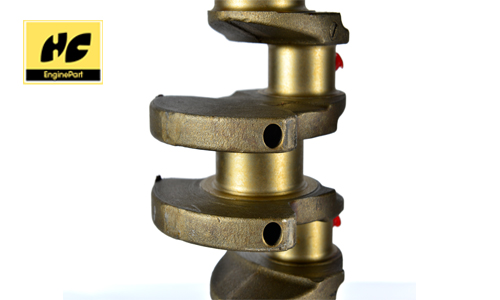The function of installing balance weight on crankshaft
2020-08-26

The work stroke of the diesel engine is completed by each cylinder in turn, so the force acting on the crankshaft is also intermittent and unbalanced. In order to transmit these forces smoothly, the rotation of the crankshaft itself must be stable. To make it stable, the crankshaft must be balanced. The crankshaft is related to the arrangement of the number of cylinders.
For crankshafts of three-, four-, five-, and seven-cylinder diesel engines, balance weights are required to make the crankshaft obtain the balance weight. The size and shape of the balance weight are calculated during design. Most of the balance weights of crankshafts are connected to the crankshaft when forging or casting. Into one. However, the balance weight of some diesel engines is bolted to the crankshaft. Due to the relatively large volume of this kind of balance block, bolt fastening is often used when the installation space is insufficient.
For a vertical six-cylinder diesel engine with a crank angle of 120, the balance effect is relatively good. It seems that there is no need to install a balance weight. However, this balance is the result of the inertia force on the crankshaft or cylinder block. As for the diesel engine, there is still a lot of inertial force, which sometimes causes the main bearing to be overloaded or the cylinder block to vibrate.
In order to avoid such failures, each part of the crankshaft has a large inertial force, so there is still a balance block. For balance weights that are fastened with bolts, when the crankshaft needs to be ground, the balance weights should be removed and marked to prevent incorrect installation from breaking the balance when reinstalling.